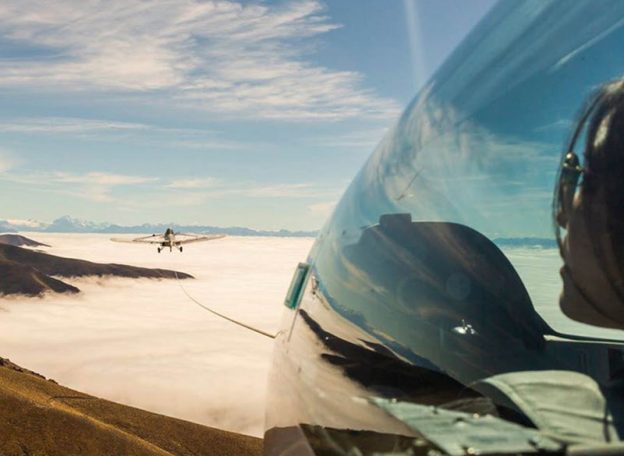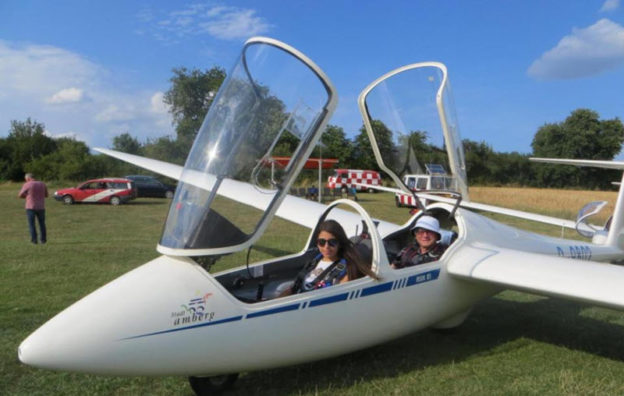Honest question: raise your hand if you’ve ever given the rudder wag for a takeoff then think to yourself “Did I put the spar pin in?” Now, the harder question: when that happened, did you release or continue the takeoff and hope for the best?
An Uncomfortable Truth
An old fighter pilot saying goes “It is better to die than to look bad, but it is possible to do both.”
While I don’t agree with it, there is a bit of truth to that quote. Many of us have a bias where we don’t want to look bad. It’s the reason we take pride in our landings. It’s why we don’t want someone to climb through us in a thermal. It’s why we don’t want to come in last. It’s why we continue a takeoff rather than abort on a contest day when you’re number 3 to launch and there are 30 gliders behind you. “I don’t want to look bad” says the voice in our head, and more often than not…we listen.
When We Talk About Discipline We Are Really Talking About Ego
My standard briefing that I give to every first officer I fly with at my airline ends with “For the love of God, if you see me doing something that doesn’t look right or that you think is stupid, SAY SOMETHING ABOUT IT AND DO NOT ASSUME I’M DOING IT ON PURPOSE. I will do the same for you.” We make mistakes in aviation. The more aviation you commit, the more mistakes you will commit. It’s simple math. I’m lucky in my two crewmember jet: there’s an extra set of eyes for quality control. When I’m in the glider, it’s just me. That little bit of paranoia in the back of my head becomes my other crew member. When I find myself thinking “Is this stupid?”, more often than not the answer is yes.
That may mean the sweet contest finish at 50’ now becomes a boring downwind to landing. It may mean that this half-knot thermal I’ve been working at 800’ for the last twenty minutes as a cirrus layer fills in probably isn’t going to get better. It may mean that I’m probably not going to make up 700’ in the last 5 miles of this final glide. It may mean I’m going to land out. I might even land out in a trainer that takes five people and an hour to de-rig. And I’m okay with that. You need to be too, or you should take up a different hobby. I have it on good authority that golf is far less likely to kill you, can cost just as much, and is equally successful in alienating you from your family. Seriously. My insurance premiums will thank you.
Being disciplined really just means that we are always putting the successful outcome of the flight above the goal of having a “fun” flight or looking good. It means acknowledging that our egos can do us more harm than good, and it means that sometimes we’re going to end up at the back of the grid or get back to the field with the glider in the trailer.
Disciplined Flying in the Real World
Flying in a disciplined manner means staying within the envelope of both our aircraft’s limitations that have been established by the manufacturer and our own, personal limitations for the type of flying we are doing. I can actually see your eyes rolling back in your head as you sigh and say “Yes, KAREN, I know how personal limitations work. How do I unsubscribe from this thing again…”
Fight that urge and keep reading.
When I was regularly flying air shows, one of the manoeuvres I performed was a reverse 1/2 Cuban with roll on the 45-degree up line. In order to have a successful outcome, my first gate was at the entry. I needed a minimum of 200 knots of airspeed to enter. If I had 199 knots, it was a fly-through. The second gate was at the top of the manoeuvre: I needed a minimum of 2000’ of altitude gain and a maximum indicated airspeed of 100 knots. If I was 1’ short of altitude or 1 knot fast on airspeed, I didn’t pull through. Those were personal limitations for that specific manoeuvre, and I had a very strong reason to adhere to them. Mostly, I didn’t want to hit the dirt and turn into a flaming ball of wreckage in front of 50,000 people. It’s a powerful motivation to do the right thing.
That seems like an extreme example, but the only difference between my personal limitations of airspeed and altitude at an air show vs. your personal limitations regarding the minimum altitude and airspeed you want to try and thermal at is the number of witnesses if something goes wrong.
As I fly, I have hard limits for almost every aspect of the flight as well as a contingency plan for what I’m going to do if I get to one of those limits. I include checklist usage as part of that. I won’t push out to the grid until I’ve done a complete assembly checklist. I won’t get into the glider until I’ve done a critical assembly check with someone that I trust to do it correctly. I won’t hook up the tow rope until I have completed a before-takeoff checklist. I definitely won’t land until I’ve completed a before-landing checklist and verified the landing gear is actually down and locked.
It works. I catch mistakes. Often, I find that I catch more mistakes the more regularly I’m flying because, like the relationship between energy and velocity, complacency is directly proportional to the square of proficiency. My wife has extended this method to include every aspect of a contest flight, down to when she turns on her inReach and backup loggers.
We Do This For Fun, But It’s A Serious Business
Many of us are not flying as much as we would want right now due to shelter-in-place orders and social distancing. When the glider clubs and airports open back up and tows become readily available again most of us will be extremely cautious for our first assembly and flight. “I haven’t done this in a while, better be careful.”
Hold on to that feeling of caution. Use this forced downtime as a hard reset on your own style of flying, and really assess the risks that you have taken in the past and are willing to take in the future.
I’ll leave you with a quote from my favourite air boss I ever worked on the air show circuit, Ralf Royce:
- Perfection is expected
- Excellence will be accepted
- DO NOTHING DUMB
Source: ‚Hugh Grandstaff / Wings & Wheels‚.



